Córdoba
Córdoba lies just east of the Córdoba Mountains, on the right (north) bank of the Guadalquivir River, in Córdoba Province of the Andalucía (Andalusia) Autonomous Community of España (Spain). Within the city are 325 thousand residents.1
The city became great as قرطبة (Qurtuba) as the capital of al-'Andalus (Islamic Spain) and its successor states, though its status declined from when it was no longer the capital. In the 13th century it because part of Christian España (Spain) and gained its current name.
The historic center of the city consitutes a UNESCO World Heritage Site. The centerpiece is the Mosque-Cathedral (Mezquita-Catedral), originally the Great Mosque, later made into a church.2 The next most important complex is the Alcázar de los Reyes Cristianos (Alcázar of the Christian Kings, 14th century), with its Roman-era mosaics and Moorish Analusian gardens. Nearby are the ruins of the Caliphal Baths. Other buildings include: the Torre del la Calahorra (Calahorra Tower, medieval); San Jacinto church (now the Palace of Congresses and Exhibitions); the Chapel of San Bartolomeo (formerly Islamic); San Franciso church; and San Nicolás church; as well as some 16th century buildings: the Seminary of San Pelagio; the Puerta del Puente; the Casa Solariega de los Pàez de Castillo; and the Casa del Marqués de la Fuensanta del Valle; and two 18th century buildings: the Triunfos de San Rafael; and the Hospital del Cardenal Salazar. La Judería (the former Jewish Quarter) preserves the medieval street pattern. Other Roman remains include a working bridge and parts of the ancient walls.3
| Year | Population | Political entity |
| 800 CE | 160,0004 | al-'Andalus (Andalusia) |
| 900 CE | 200,0004 | al-'Andalus (Andalusia) |
| 1000 CE | 450,0004 | al-'Andalus (Andalusia) |
| 1100 CE | 60,0004 | al-Murābiṭūn (Almoravid Empire) |
| 1200 CE | 60,0004 | al-Muwaḥḥidūn (Almohad Empire) |
| 1300 CE | 40,0004 | Corona de Castilla (Castille and Leon) |
| 1800 CE | 28,0004 | Reino de Espaņa (Kingdom of Spain) |
| 1900 CE | 52,0004 | Reino de Espaņa (Kingdom of Spain) |
| 2008 CE | 325,0001 | Reino de Espaņa (Kingdom of Spain) |
External references
Interior of the Mosque-Cathedral, Córdoba, Córdoba Province, Andalucía (Andalusia) Autonomous Community of España (Spain)
Historical maps
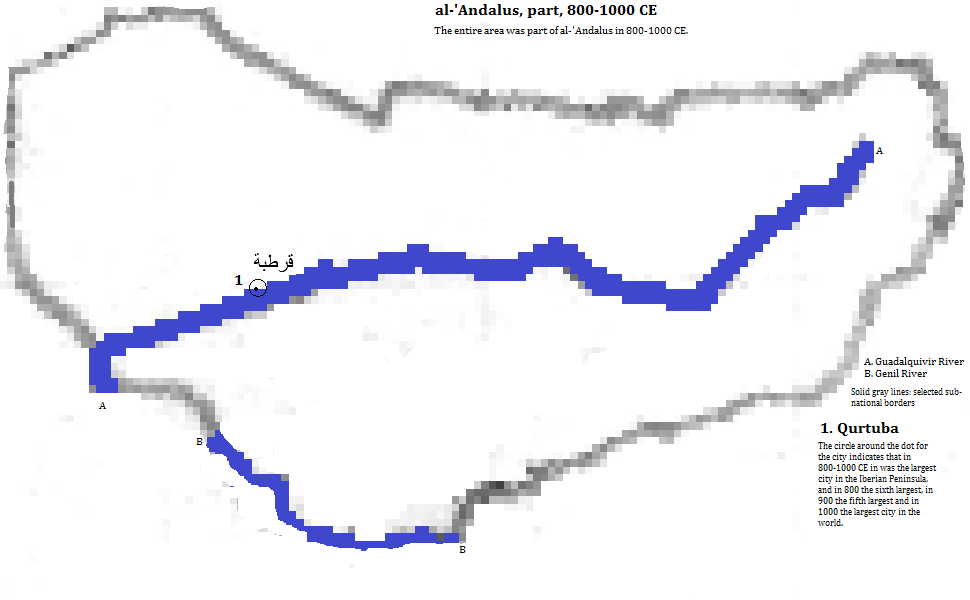
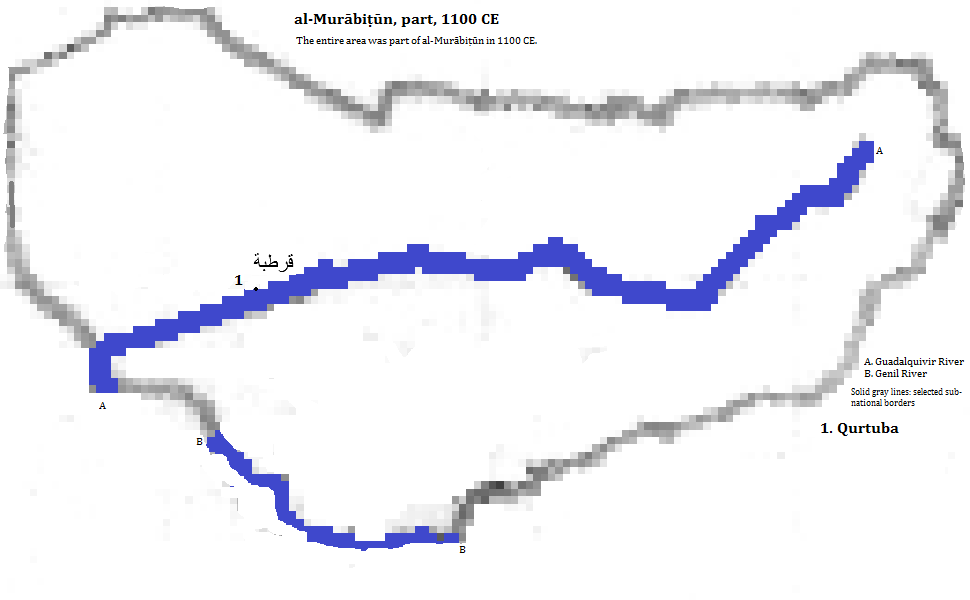
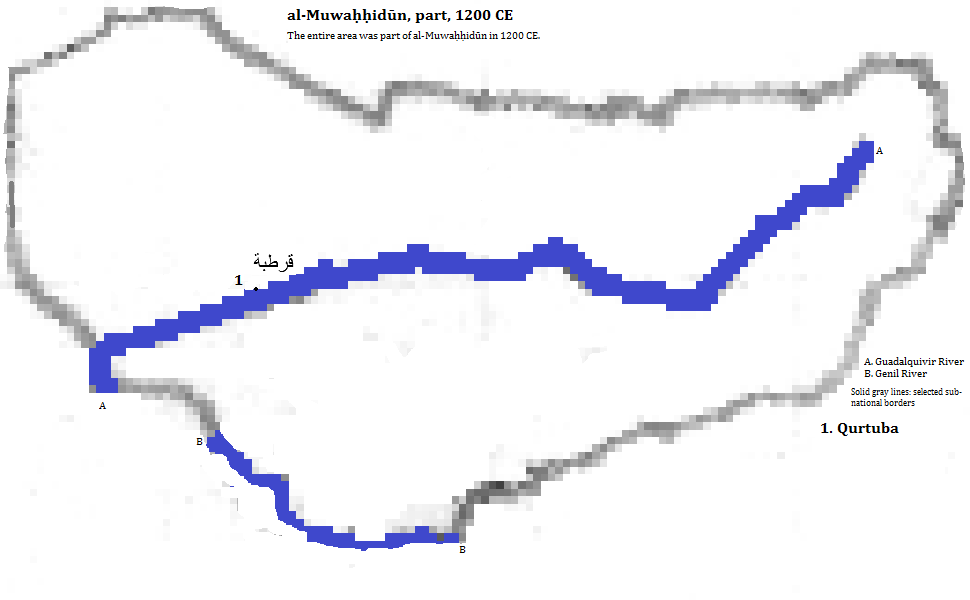
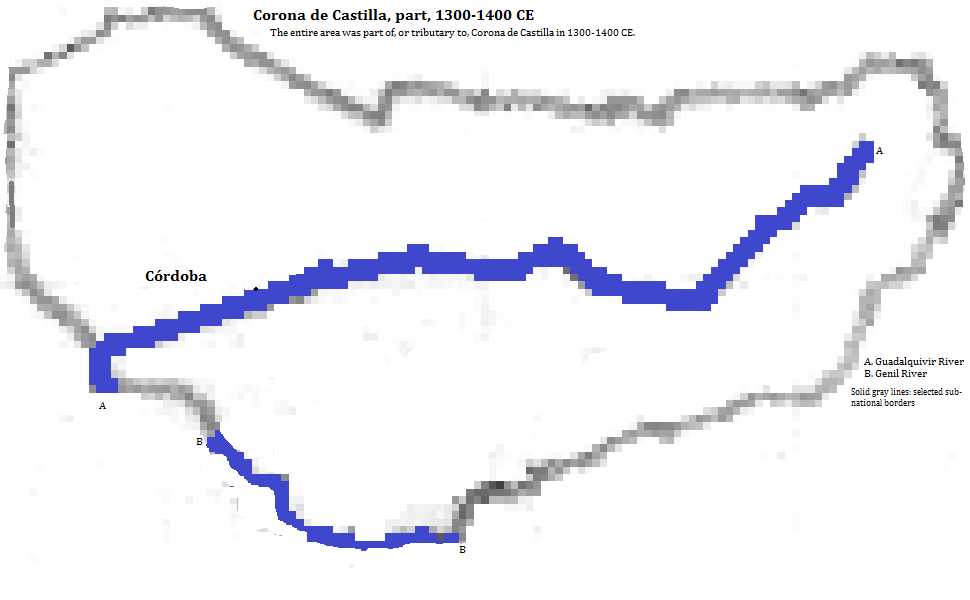

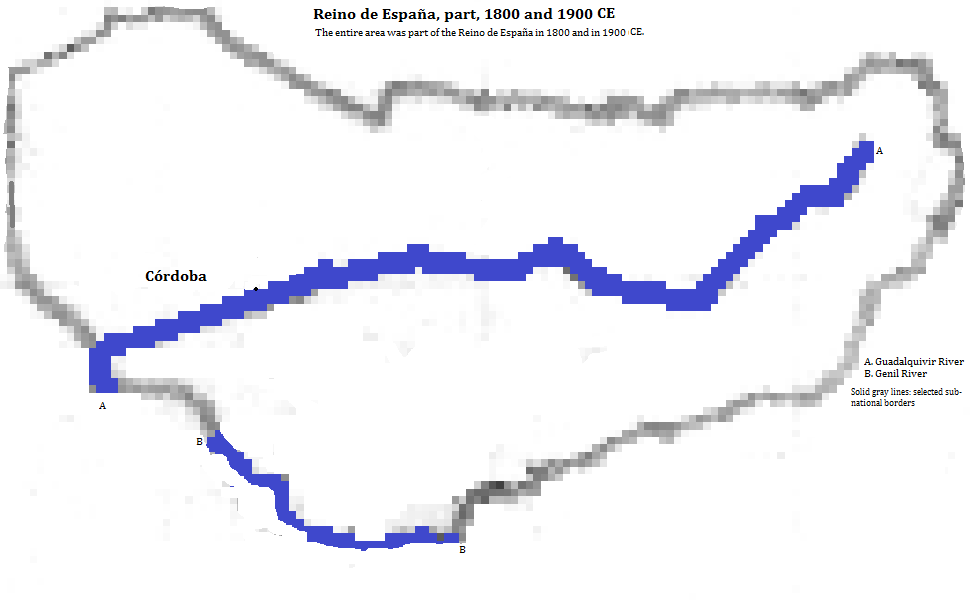

Footnotes
1. 2008 figure from the sidebar of https://en.wikipedia.org/wiki/C%C3%B3rdoba,_Andalusia, accessed 12/28-30/2015.
2. The 'mezquita' in the name indicates only its history; España (Spain) has been since its inception a Christian country. Moslems who attempt to pray in the building are repressed by security forces. The building is a tourist attraction according to www.touropia.com/tourist-attractions-in-Spain/, accessed 12/30/2015.
3. The list of buildings and the supplemental information are from UNESCO, World Heritage Sites (Firefly Books, 2010). The Jews in La Judería were exterminated by the Christians.
4. Estimate in Tables of the World's Largest Cities, in Tertius Chandler, Four Thousand Years of Urban Growth, 2nd ed. (The Edwin Mellen Press, 1987). It was the largest city in the Iberian peninsula in 800, 900 and 1000 CE, and in 800 was the sixth largest, in 900, the fifth largest and in 1000 the largest city in the world. He also listed it as far back as 1600 and 1360 BCE, but I reject that. Tartessian culture, at least in its urbanized form, is not that old. Huelva discoveries of foreign pottery date from the tenth and eight centuries BCE and no other settlement rivals Huelva. See the 'Archaeological Discoveries' section of https://en.wikipedia.org/wiki/Tartessos, accessed by me 12/28/2015.







